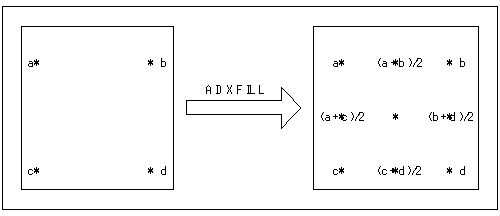Chapter Contents
Previous
Next
|
Chapter Contents |
Previous |
Next |
| Macros for the Design and Analysis of Experiments |
where
| ds | is the name of the SAS data set holding the design to be filled in. |
| nmlst | is the list of factor names. |
The ADXMAMD and ADXXVERT macros construct constrained mixture designs from the vertices and generalized edge centroids of the constrained feasible region. These will be the points from which an optimal design may be chosen for fitting a first or second-order model. However, in practice, experimenters often add a few points spread around the interior of the feasible region. These additional points may protect the fit from bias if the model is incorrect. You can use the ADXFILL macro to add such points to any design with a convex feasible region.
The ADXFILL macro works simply by adding to the design the average of each pair of points. Thus, if the data set BOX contains the four vertices of a box, labeled a, b, c and d, then the following statements fill in the box as shown in Figure E.17.
%adxgen %adxmix %adxinit %adxfill(box,x1 x2);

|
Note that the centerpoint is the average of more than one pair of points, but it is only included in the filled-in data set once.
You may execute the ADXFILL macro more than once for a design, but note that the number of points can get large very fast, growing exponentially in the number of times you execute the macro. You can use this macro with the uniform coverage criterion of the OPTEX procedure; see Example 24.10 for an example.
|
Chapter Contents |
Previous |
Next |
Top |
Copyright © 1999 by SAS Institute Inc., Cary, NC, USA. All rights reserved.